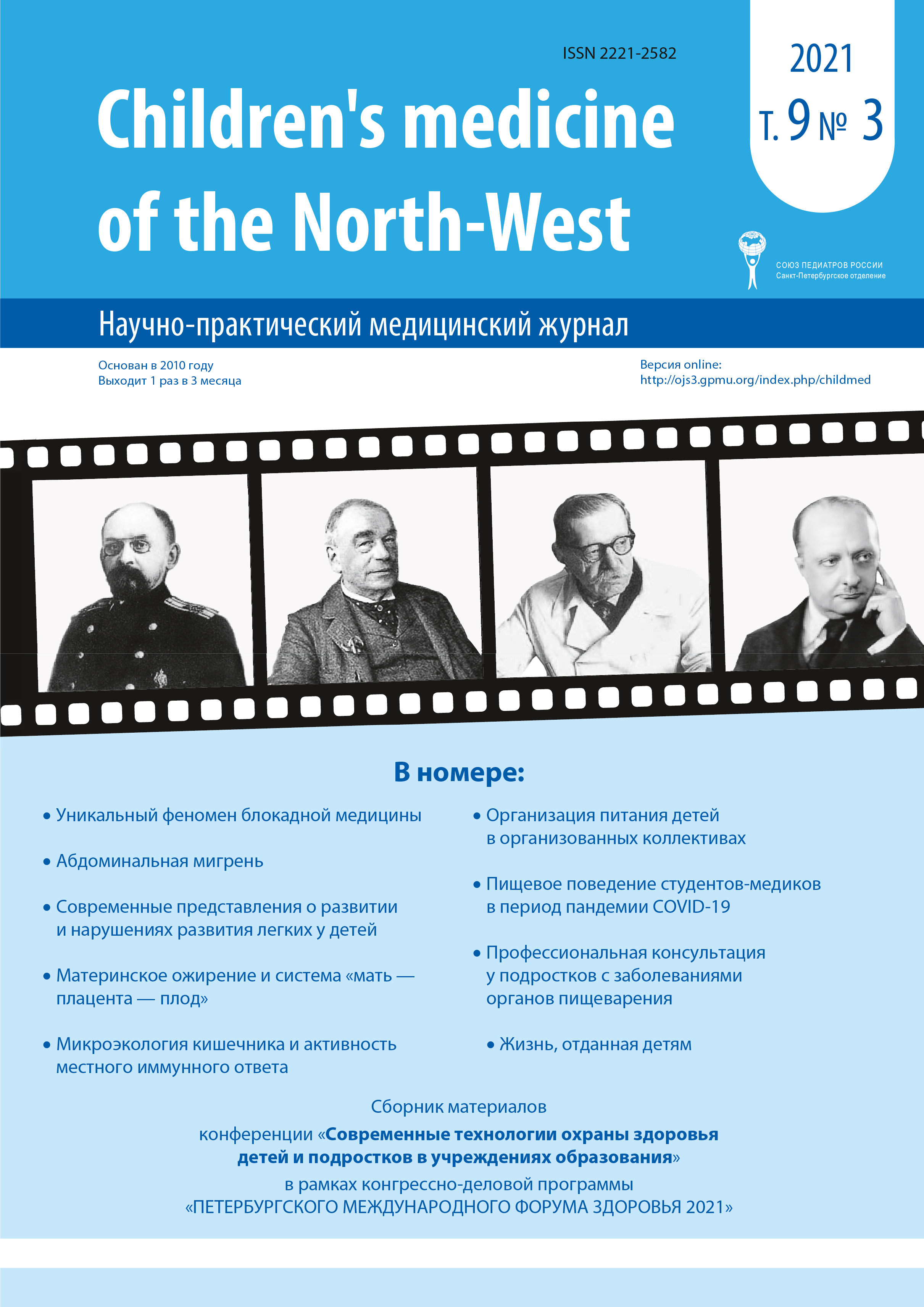ABDOMINAL MIGRAINE (MODERN CONCEPTS OF DIAGNOSIS, ETIOPATHOGENESIS, TREATMENT)
Abstract
According to the classification of Functional gastrointestinal disorders (FGIDs) Rome IV, abdominal migraine (AM) belongs to the section of pediatric functional gastrointestinal disorders, heading H2c. AM is also described among the “Episodic syndromes that may be associated with migraine” - benign paroxysmal torticollis in infants, benign paroxysmal vertigo in childhood, cyclic vomiting syndrome, infant colic. The lecture is based on a review of the literature by J. Mani and Sh. Madani (2018). AM occurs in 1-15% of children and adolescents aged 4-15 years, more often in girls. The average age of diagnosis is 3-10 years. In the origin of AM, hereditary predisposition is important. It is assumed that mutations and polymorphism of genes regulating ion channels, neurotransmitter metabolism and mitochondrial metabolism in the central nervous system contribute to the development of the disease. Common trigger factors that provoke the development of migraines and AM were identified: bright or flickering light, dissomnia, travel that violates the usual way of life and regime, fasting, school or family stress, the use of products such as citrus fruits, caffeine, cheese, chocolate, carbonated drinks, dyes and flavors. AM is recognized as a harbinger of the development of classical migraines with and without aura. Both diseases have similar pathogenetic mechanisms of development, common electrophysiological correlates and similar treatment strategies. Clinical manifestations of AM in childhood are repeated episodes of the same type of unexplained abdominal pain, nausea and vomiting in the absence of a headache. The diagnosis is based on FGIDs (2016) and ICHD (beta version, 2013). Differential diagnosis is carried out in a very wide range of diseases, an emergency condition is excluded. Treatment of AM includes psychoeducation, avoidance of provoking factors, modification of diet and lifestyle, cognitive behavioral psychotherapy. Triptans and valproates are used to treat acute seizures. The means of prevention are beta blockers, serotonin antagonists, calcium channel blockers, serotonin agonists with antihistamine properties.



